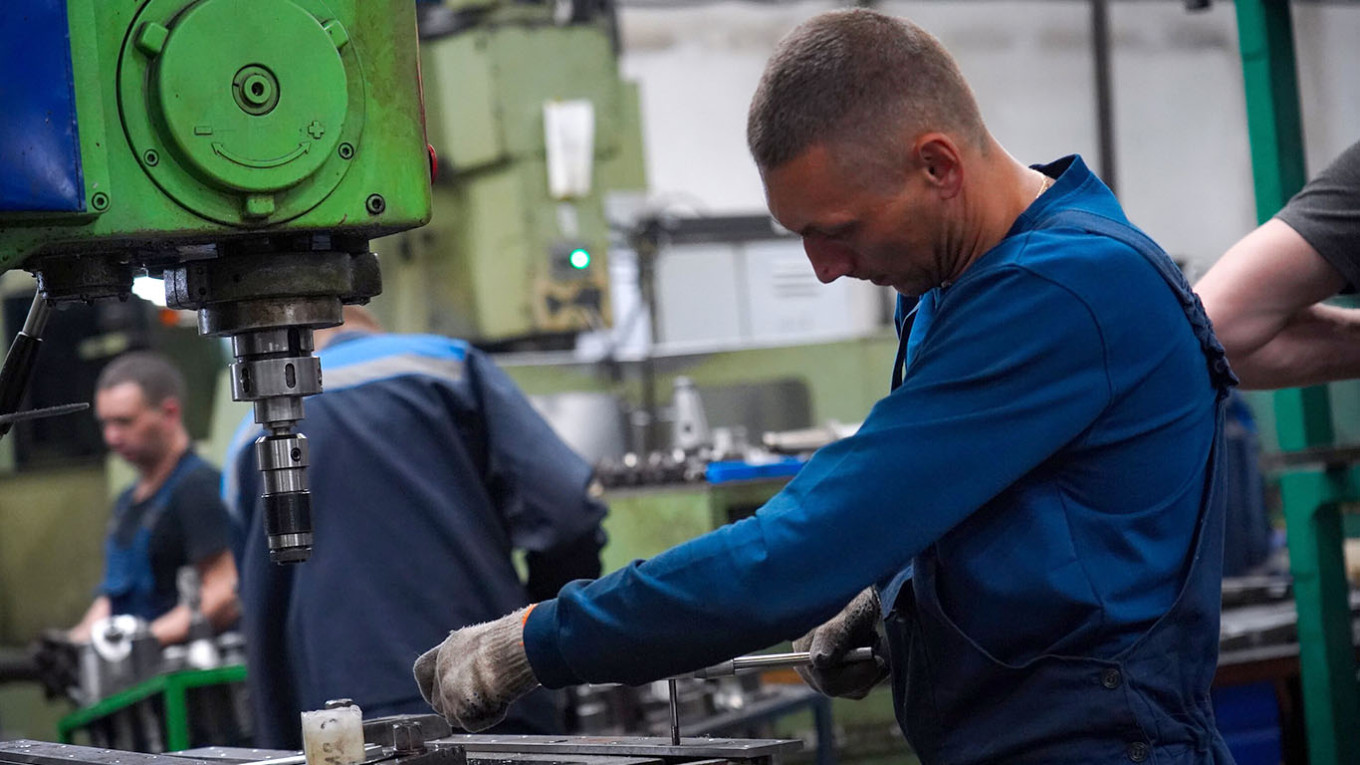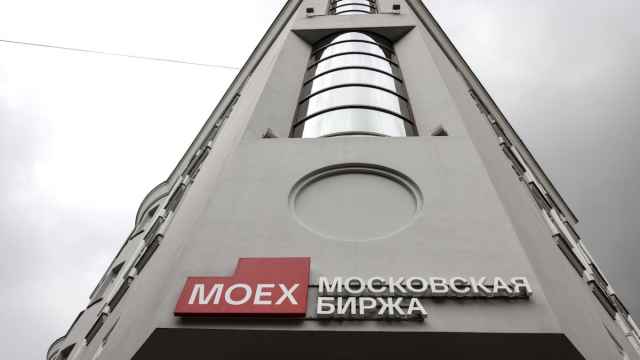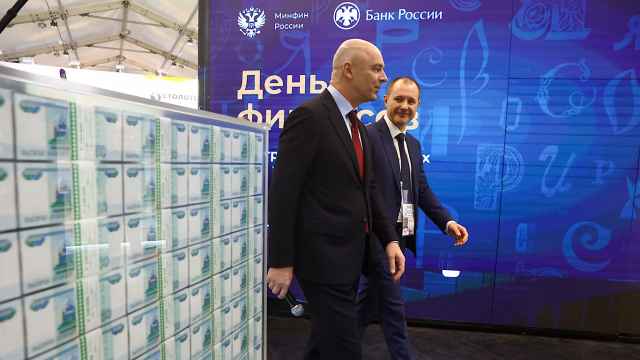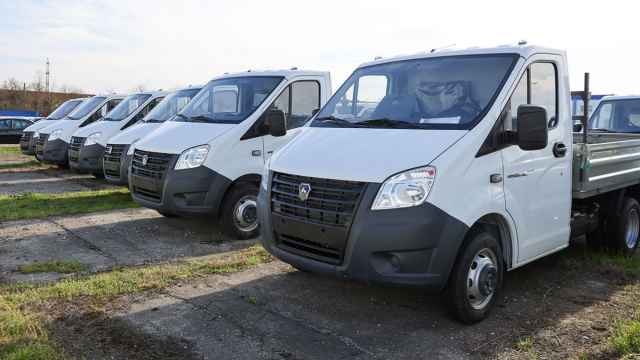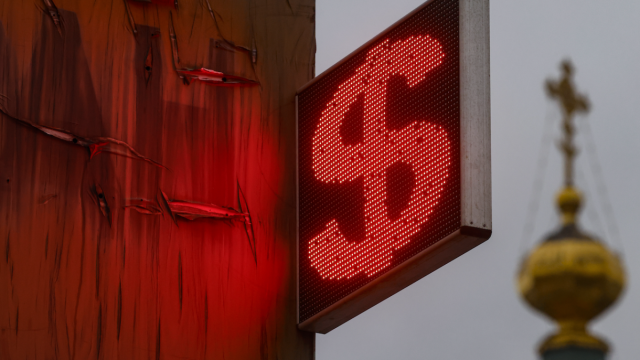Production at the largest Russian enterprises grew rapidly in 2012-2023 despite the pandemic, sanctions and weak impact of production growth on wages. Productivity at the largest enterprises is up as owners scramble to counter a swathe of new problems and maintain their competitiveness, according to a survey from the Higher School of Business.
The survey comes at a poignant time following the recent release of the report from former Italian Prime Minister and ex-European Central Bank boss Mario Draghi that found Europe has lost its competitive edge and has fallen badly behind both China and the U.S.
Moreover, the war in Ukraine has also shown that the EU is well behind Russia in terms of the military-industrial complex, which is massively outproducing that of Europe after President Vladimir Putin put the economy on a full war footing. Europe faces the prospect of falling behind not only the U.S. but also Russia; as bne IntelliNews reported, China and Russia are the most powerful manufacturing countries in the world and Europe respectively. Despite everything, Russia's economy is flourishing — for now.
But Russia is still facing multiple challenges. Recruitment for the war in Ukraine has driven unemployment to an all-time low of 2.4% and sent nominal wages soaring, making the issue of productivity more important than ever before. Increased production costs, as well as the inaccessibility of Western technologies and industrial equipment, have only added to the headaches and reduced the number of technological solutions.
The pandemic and sanctions crises have worsened Russia’s pre-existing problems with low productivity dynamics. In 2020, it fell by 0.4%, then in 2021 it grew by 3.7%. In 2022 it decreased by 3.6% compared to 2021, and in 2023 it recovered, but not much — by 1.7%, according to Rosstat. The need to increase productivity is now widely talked about at the highest levels, as Putin made clear in his guns and butter speech in March that maintaining the growth and development of the civilian part of the economy is as important as developing the military-industrial base.
The largest companies are at the forefront of the effort to lift productivity. HSB conducted a study of productivity and remuneration in the largest Russian companies in 2012-2023 — more precisely, the relationship between unit production, capital expenditures (CAPEX), the number of employees and personnel costs, Vedomosti reported. The sample included 71 companies that published financial statements under IFRS for 2012-2023 and disclosed the consolidated number of staff in annual reports or reports on sustainable development.
The classic approach to determining labor productivity involves calculating the added value per employee, but the costs needed to make this calculation are not included in the IFRS declarations. Instead, a company's annual revenue per employee was chosen to assess labor productivity in the study.
Since 2012, Russian enterprises have experienced three unprecedented foreign economic crises: pandemic 2020 and two sanctions periods — 2014-2015 and 2022-2023. In 2020, due to lockdowns, revenue fell in most industries, and in 2023, enterprises had losses due to the sanctions restrictions. Sanctions were particularly painful as they led to losses even in the most efficiently run companies through no fault of their own.
The revenue performance in the sample was not even, with some companies enjoying leaps in revenues during the sanctions period while others suffered heavy losses. About two-thirds of organizations were affected by the sanctions imposed in 2022.
According to the respondents, for 39% of companies, sanctions restrictions created only problems, for 3% had only positive consequences, and for 25% experienced both.
According to a separate hh.ru survey: 31% of respondents had an increase in production over the past five years, another 22% had a constant increase in production depending on market conditions, and 19% had no change or decreased slightly.
Vedomosti summed up the main effects on the various sectors in the HSB survey:
Oil and gas companies had a decrease in 2020 and 2023. But the decline in 2023 for all companies, except Gazprom, turned out to be small. Russian oil companies have reoriented oil exports to China and India, friendly countries of Africa, Latin America and Southeast Asia. Oil production in Russia in 2023 decreased by only 2.2% to 523mn tonnes.
Sanctions against Russian gas were not imposed, but imports of pipeline gas from Russia to the EU in 2022 were halved. Domestic companies, primarily Novatek, began to very successfully increase LNG exports to the EU, and Russian liquefied gas began to displace LNG from the United States in Europe. The company's revenue and output rose in 2023.
Iron and steel enterprises' revenues fell in 2019, then in 2021 there was a noticeable increase, followed by a decline in 2022 due to sanctions. According to Worldsteel, steel production in Russia in 2022 decreased by 7.2% to 71.5mn tonnes. But according to RosStat, already in 2023 the total metallurgical production in Russia climbed by 6%. The domestic market became the main driver of growth.
Among non-ferrous metallurgy enterprises, UC Rusal showed the largest increase in revenue from 2020 to 2023. At first, the rise in aluminum prices helped, but in 2023 dollar revenue fell by 13% due to sanctions, supply chain disruptions and price reductions. However, UC Rusal managed to step up the production of aluminum, bauxite and sales of primary aluminum and alloys, according to the company's IFRS.
The chemical industry group includes the manufacturer of polymers and rubbers Sibur and manufacturers of mineral fertilizers. In 2023 Sibur increased sales of polymers in the domestic market, replacing foreign supplies of synthetic materials. Thanks to significant investments in R&D, the company replenished the range with new brands of products, continued import substitution of critical special chemicals. For Sibur, 2023 was a year of rapid take-off.
In 2020-2022, the revenue of fertilizer manufacturers grew, and only in 2023 there was a decrease. Most of the products of these companies traditionally go abroad. In 2022, exports decreased by 15%, according to the Russian Association of Fertilizer Producers, and in 2023 they exceeded the level of 2022 by 5% in physical terms. Nevertheless, the companies' revenue decreased due to a decrease in export prices by 1.5-2 times compared to the first half of 2022.
The sanctions crisis benefited Russian banks, insurance companies and the Moscow Exchange. In 2023, all of them increased revenue (banks had operating income before the formation of reserves) and production. In 2023, banks received a record net profit of 3.3 trillion rubles ($34 billion), according to the Central Bank. The main contribution was made by the growth of interest and commission income.
2020 turned out to be a turning point for transport and infrastructure enterprises. But in 2021-2022, almost all companies with data were able to recover, except for airlines. Revenue and production grew at Rostec, Transmashholding (TMH), Kamaz and Rosatom (Atomenergoprom).
For telecommunications companies, the sanctions meant that it would be impossible to purchase new equipment, which was 90% imported from operators, in the EU and the United States. Companies had to look for new suppliers. They manage to maintain services and infrastructure, but it becomes increasingly difficult to develop. Operators' revenue is rising and production is also expanding, although not much.
Food retail grew steadily in 2020 and 2022-2023. The two leading supermarket giants X5 Group and Magnit had the best revenue growth rates.
Russia’s biggest companies do best
In general Russia’s largest enterprises fared well during the crisis, buoyed by rising real disposable incomes climbing to a record 9.6% in July or through state investment and spending boosting demand for their products: 67 of the 71 large firms said they saw production rise in the period.
Another factor protecting the big companies is that many of them enjoy a monopolistic power in the market that was dramatically boosted in 2022 by the departure of international firms, many of whom had been competing with these Russian leaders. This handed the Russian companies large slices of market share overnight. The unconditional biggest winners of the sanctions crisis are companies in the financial sector and the IT industry, according to the study.
In terms of revenue per employee the biggest winners were (10 million rubles/employee is circa $100,000/employee): in the oil and gas industry in 2023, Lukoil and Novatek had the highest labor productivity (75.4 million rubles and 69.6 million rubles per person respectively); in metallurgy and mining, NLMK and UC Rusal (21 million rubles and 19.4 million rubles per person); in chemistry and production of mineral fertilizers, Sibur and Fosagro (31.3 million rubles and 20.2 million rubles per person); in the financial sector, Moscow Exchange (40.6 million rubles per person); in the telecommunications and IT industry, Yandex (30.4 million rubles per person); in retail trade, M.video (15.3 million rubles per person); in the transport infrastructure and transport infrastructure industry, Transcontainer (61.9 million rubles per person per year); and in mechanical engineering, Kamaz and TMH (12.8 million rubles and 11.8 million rubles per person per year).
In terms of percentage productivity gains, the leaders in terms of production growth for 2012-2023 were Far Eastern Shipping Company (DVMP) and Transcontainer (25.2% and 20.2% of average annual production growth respectively); insurance companies Sogaz (17.1%) and Alfastrakhovanie (16.3%); banks Alfa-Bank (16.4%) and VTB (15.7%); machine-building enterprises TMH (17.3%) and Kamaz (14.6%), as well as manufacturer of mineral fertilizers Fosagro (15.7%), and oil company Tatneft (14%).
Can Russia compete with the biggest foreign companies?
The American Center for Productivity and Quality (APQC) calculated cross-industry performance indicators of employees according to the sample of the largest American enterprises that are members of APQC.
The median value of production of one employee is $310,000 per year (26.6 million rubles), employees of 25% of the best enterprises generate an average of $564,706 (48.5 million rubles at the average exchange rate of 2023); the worst 25% yield an average of $176,471 (15.1 million rubles).
In a sample of 71 Russian companies, only 10 companies, including Rosneft, Gazprom Neft, Moscow Exchange, Russneft, Sibur, Yandex and Unipro, had better indicators than the American median. And three companies — Lukoil, Novatek and Transcontainer — corresponded to the group of 25% of the best American largest enterprises, reports Vedomosti.
The Russian indicators improve if the average ruble exchange rate is used, as the Russian national currency has weakened recently due to the mounting yuan liquidity crisis that has depressed Russian exports, confusing the picture.
According to APQC calculations, the median output of an employee in the United States is about four times higher than the employer's costs, and in the most efficient companies this figure is 7.3 times. According to this parameter, Russian enterprises are ahead of American ones: 38 companies out of 71 correspond to the group of 25% of the best enterprises in the United States. And only six sample companies had worse than the median figures in 2020.
The greater gap between the employee's output and his costs is explained by the fact that interest rates and bonuses for business risks are higher in Russia and in general, lower personnel costs compared to revenue are typical for poor countries.
Capex comparisons
The impact of Capex on labor productivity depends on the technical equipment and quality of the organizational form of the enterprise: the level of Capex, the qualification of the workforce, as well as the quality of management and operational processes, HSB says.
However, the study showed a weak impact of Capex on production in the largest companies in 2012-2023. There was a weak positive correlation (0.24) between the dynamics of production and the growth of Capex. And between the dynamics of production and the average ratio of Capex and revenue, there is a weak negative correlation (-0.29) — the more you spend, the less growth gains you get. The most capitalized enterprises in the sample are Novatek, whose Capex exceeded personnel costs by 4.71 times on average, DVMP (4.1) and Gazprom Neft (3.87).
In Russia, companies that spend a lot on Capex almost never share the benefits of productivity growth with employees. Before the pandemic, organizations with significant investments in fixed assets hired qualified specialists at good salaries, while all others recruited unskilled personnel to train them later and paid them badly. But due to the shortage of qualified personnel today, enterprises with high and low capital costs have ceased to differ from each other in the hiring policy; the growth of personnel costs has accelerated for everyone.
Four growth strategies
The study found that the largest Russian companies can be divided into four main groups, reports Vedomosti:
Group A: optimizers which consistently reduced the number of staff in 2012-2023, their output increased by a greater percentage than the number decreased, and the growth in revenue was ahead of the growth of personnel costs. This group consists of 20 companies, metallurgy is most fully represented (seven companies), there are also Sberbank and VTB, Russian Railways, Transcontainer, FGC UES, Transmashholding and Rostelecom.
Group B: optimizers with a weak dependence of revenue on changes in the number of staff. Their revenue growth depends mainly on the customer base or market prices. The group's companies systematically reduced their staff, the output of employees grew more than the number decreased. This group includes 12 companies, including MTS, Lukoil, UAC and Alrosa.
Group C: the most numerous; these are companies that expand their business or open new directions and hire employees for this purpose. Their revenue, due to the growth of demand, prices or other external factors, is ahead of the growth in numbers and entails production. The group includes 34 companies, including the entire retail group and a significant part of the oil and gas, Yandex and VK, Sibur, Moscow Exchange, DVMP, etc.
Group D: consists of four companies with declining production (on average by less than 0.5% per year). For one of the companies, this was the result of the division of the business, for the rest it involved a change in the accounting policy.
With growing salaries and rising cost pressures, about half the companies in the sample are focusing on boosting labor productivity and operational efficiency. A third of the companies in the sample have set up special units to hunt for operational gains or cost cuts. Top managers have been trained in lean production, process optimization tools and a culture of continuous improvement has been nurtured over the last five years.
Training staff has become increasingly important with three quarters (76%) of the sample reporting investments into improving the skills of their managers over the last five years and more generally training between 5-20% of their staff. Every fifth respondent said they have retrained at least half their staff.
A separate survey carried out by Vedomosti found the most common reason for improving productivity was improving business processes (55%), followed by staff training (48%) and introduction of new IT or automation (45%). Staff reduction was the least popular in sixth place. As companies are increasingly investing in their staff’s training Russian companies have become increasingly reluctant to sack them to simply save money.
This article was originally published by bne IntelliNews.
A Message from The Moscow Times:
Dear readers,
We are facing unprecedented challenges. Russia's Prosecutor General's Office has designated The Moscow Times as an "undesirable" organization, criminalizing our work and putting our staff at risk of prosecution. This follows our earlier unjust labeling as a "foreign agent."
These actions are direct attempts to silence independent journalism in Russia. The authorities claim our work "discredits the decisions of the Russian leadership." We see things differently: we strive to provide accurate, unbiased reporting on Russia.
We, the journalists of The Moscow Times, refuse to be silenced. But to continue our work, we need your help.
Your support, no matter how small, makes a world of difference. If you can, please support us monthly starting from just $2. It's quick to set up, and every contribution makes a significant impact.
By supporting The Moscow Times, you're defending open, independent journalism in the face of repression. Thank you for standing with us.
Remind me later.



